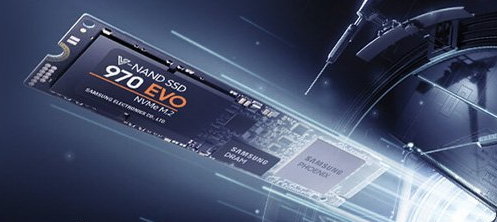Erixx:
Since you have them, hav you ever tries comparing them for actual things we do every day ? The marketing folks spend there time getting this stuff out there and nerds like us eat it up. But I am much more interested in stuff we do every day.
Looking at typical testing
Windows Startup - The fastest SSD does 17.0 seconds, the worst 20.9 ... in the course of a week, that's 27 seconds a.d that's assuming you boot every day. For me, (monthly reboots) that's about 47 seconds a year. When I sit down, I start up the box, listen to my phone messages, read my text, grab a cuppa .... return those calls. Impact = None.
Compression / Uncompression - One does 49s, one does 32.6 - How many times a year to you uncompress and ISO file. I have one on my HD, uncompressed it once.... used it about 6 - 8 times since.
MP3 Indexing - Never done it but how often does this have to be done and why does the 1.1 second difference matter ?
ISO File copy - I have done that a few times as I said above. But usually from SSD to a Thumb drive. so I wonn't see the 4.2 vs 23.4 second completion difference. But do folks sit and watch the file transfer take place ? Or do we multi-task and do something in the interim ?
MS Office Installation - We don't use MS Office but each new machine see's this once in 4 or 5 years. And hen it does, the person is multitasking doing something else.
Anti-Virus - Each box does a full scan while the user is sleeping ... who cares how long it takes ?
ITunes, Chrome, Acrobat - Each differs by 2-3 seconds... again once in 4-5 years.
Photoshop - This one is interesting because we see a significant difference. But the task .... open ten50 megapixel images, crop, move, auto levels, resize to 1024x768, and save for the web ... is this something a typical user would do ?... without actually looking at the images to determine if any other actions were required ?
Gaming - Again best to worst = 0.6 in one game to 2.3 in another. Maybe it's my age, but If I keep on playing, I miss the best reward in game ,,, a chance to grab a snack or take a bio.
Now after all that, I'll say we put a fast "pro" level SSD in ever build because we're nerds and most of our users are too. But I feel uneducated on SSD performance impacts on performance impacts in every day use. We'll recommend multiple SSds for folks doing animation, rendering, video edig because there is a real return on investment there. But when asked to build 6 boxes for a small legal firm, what is he real impact of an SSD to the firm ? Granted it's faster.... but will it enable his employees to be more productive ? Does it matter if it boots faster if they are getting their morning cuppa and chatting about GoT while it is ? Will the legal secretary complete typing an extra legal brief each day ? Will the CAD Operator complete the detailing an another construction detail because he has an SSD ? With the gamer complete another level or reach a further save point because they have an SSD ? Yes, the hardware completes tasks faster but as the operator time dwarfs CPU time, are they actually getting things done faster and if so, how significant is it ?
I wish there was a bechmarking keylogger that recording mouse and KB input thru an 8 hour day. Run it as a script, keeping the timing between each keystroke and mouse movement and allow us to see what actual hardware performance impact is. But anyway erixx, if you have the opportunity to explore this avenue, would love to see the results.







